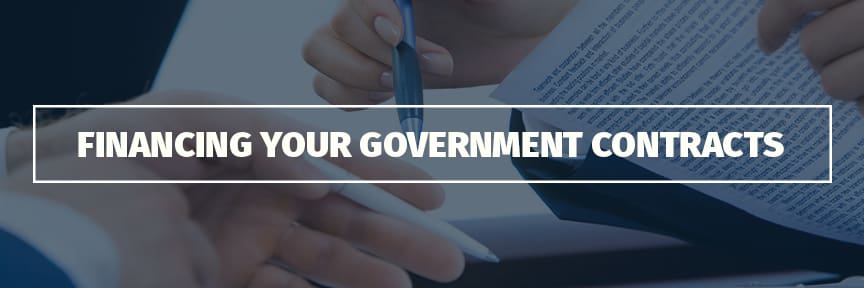How will you meet the demands of that forthcoming task order without an ample supply of working capital? Many small businesses fail because they do not have the proper resources to support their goals. Insufficient capitalization at the company’s inception can haunt your business for years. What are your options? Should you borrow money from friends, family, or a financial institution? Should you seek an outside equity investor?

The decision to borrow money should begin with a thorough analysis of your company’s needs. First, try to identify the most significant outflows of cash for your business and determine if you can reduce those areas.
Are customers taking longer than normal to pay? Have your inventory levels increased? Have you paid cash for large investments in new equipment? It is important to be proactive. Forecasting your cash flow will help prevent cash flow issues before they happen. If you typically prepare an annual budget, perhaps monthly or quarterly will be better for your situation.
Servicing new debt will adversely affect cash flow in the future. When financing new equipment, be careful not to pay on the loan over a period of time that is longer than the useful life of the asset. For example, if a new piece of equipment has a five-year economic life but was being financed over ten years, you’d have loan payments due in years six through ten without any profits from the equipment.
Before obtaining a loan, you should determine whether the bank will require any loan covenants that could pose difficulty for your business.
Typical loan covenants could include:
- Maintaining a required cash balance
- Customer payments through a bank lock box
- Maintaining required financial ratios, such as debt to equity and liquidity ratios
- Restrictions on acquiring new equipment
- Restrictions on incurring new debt
- Or possible limitations on owner compensation and bonuses
You will need to know how much financing is required, when it must occur, how long the funds are needed, and how it will be repaid. A projection of your cash flow should cover the entire term of the loan to help mitigate problems in future periods. You should develop and maintain a solid business relationship with your local commercial bankers. Make certain your bank has extensive knowledge of your industry, it can be a good resource in determining the type of financing that is needed.
Short-Term Financing
Lines of credit are useful tools for many businesses, particularly those who have to pay their employees and subcontractors first, before being paid by their customer. Bankers place emphasis on cash flow lending, as opposed to net worth lending, and will focus on your short-term cash flow. These are typically based upon the current prime lending rate and other indexes, helping to minimize the bank’s lending risk. Compensating cash balances typically range from 15-20 percent of the line of credit, and the loan is usually required to be paid down completely during a period of time, at least annually.
Commercial Finance Companies
Finance companies usually focus on your accounts receivable, the effective interest rates are typically higher than your bank’s rates. They will usually lend up to 80% of your current accounts receivable, or they may actually ‘factor’ your accounts receivable by ‘buying’ them from you at a discounted amount. The availability of funds and predictable cash flow are positive with financing your accounts receivable, but you’ll most likely have some higher administrative expenses along with the higher effective rate.
Term Loans
A term loan is one that extends beyond one year, it may be secured or unsecured, depending upon your financial strength. Principal repayment occurs of the duration of the loan within the prescribed amortization period. The longer the term, the easier it will be to make the periodic payments.
Lease Financing
Lease financing gained in popularity over the years, mostly because it allowed your business to utilize an asset, without the lease obligation showing on your balance sheet. Recent accounting changes have changed this reporting rule, and most lease arrangements now have to be shown on the balance sheet, both as an asset, and a liability, to fully inform the reader of the financial statements.
Government Lending Programs
Your banker should also be familiar with Small Business Administration (SBA) loans, Veterans Administration (VA) loan, as well as several other agencies’ offerings. These can carry high loan application fees and take longer to process, but they may provide the bank with additional security for your loan.
Venture Capital
Businesses will usually turn to equity investors when they have exhausted all financing efforts or have reached their comfort limits in servicing debt. Venture capitalists will typically look at small, high-growth potential companies in hopes of making a significant return on their investment. Often, with the use of venture capital, you can lose some control of your company, and its direction. Care should be taken in partnering with a group that has the same goals and objectives for your company. This can potentially provide you with an alternative exit strategy for your company.

The experience and guidance of your professional advisors is most helpful in avoiding unforeseen outcomes for your business. If you would like to discuss ways in which to improve and predict your cash flow, or your business’ financing needs, please contact YHB (Yount, Hyde & Barbour, P.C.) Principal Tom Moler by email at tom.moler@yhbcpa.com or by phone at 703-777-7739.

